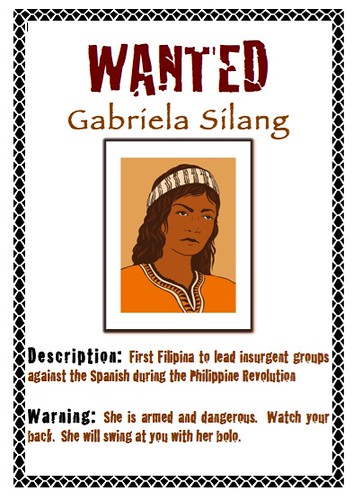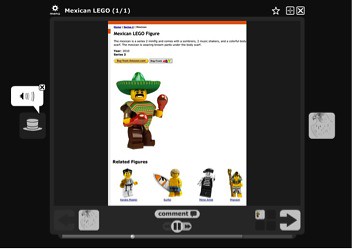
Last week, I talked about where I was wobbling in my teaching practice. This week I want to describe a new pose I am trying out.
This week month I’m trying out a pose of sustained writing and “hustle.”
This month is National Novel Writing Month–colloquially NaNoWriMo, which challenges participants to write a 50,000+ word novel in the month of November. It’s a daunting number of words, but when broken into daily amounts (just shy of 1700 words per day) it’s … less daunting (?). I’ve never actually done it. However, I did challenge my 12th graders to participate several years ago. One of my students, Sam, was already a novelist in her own right and the month of November was one where she was co-teaching the class with me and coaching her peers with myriad writing strategies. I talk a bit more about this process of student-driven writing instruction in my book.
In any case, while I’m not writing a novel this month (or in the foreseeable future), I am using the online momentum of NaNoWriMo to focus on getting significant wordage on two current research projects: my work with Cindy O’Donnell-Allen on Pose/Wobble/Flow and my work exploring the literacy practices enacted in tabletop roleplaying games. I am calling these two projects, respectively, #PWFWriMo and #RPGWriMo. (There’s also a contingent of academics tweeting to the hashtag #AcWriMo that I’ve been lurking around.)
I want to describe my writing practices briefly. First of all my rules for my month of #NaNoWriMo are as follows: every day I will publicly update my progress on Twitter – it forces me to feel accountable and to feel bad on the days in November when I don’t write. A day of writing starts when I wake up and ends when I go to sleep. That means even if I’m writing well after midnight, it’s the same day (so chill out imaginary time-sticklers!). I’m also keeping two tracking systems. On my computer I have a simple Excel file where I list the actual words I write each day. It looks like this:
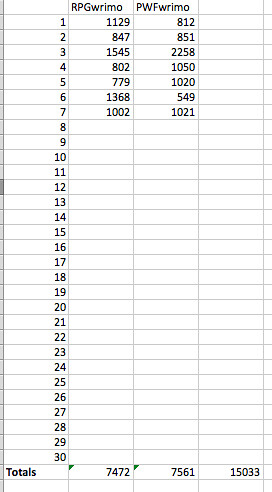
In my notebook I have a chart that measures writing in increments of 250 words at a time. It looks like this:

I will write, at a later time about how I am using Scrivener to allow me to organize my jumble of verbs and haphazard sentences into something useful. For now, here is a screenshot of in-progress messiness and varying writing prompt:

What I think is important to share here isn’t how awesome it feels to be 15,000+ words deep into a couple of projects that I am working on. Instead, I am interested in how reading and writing are fundamentally different in 2013. When I write in the morning and add my progress to a growing number of tweets, I am joining a community of other writers. I feel accountable because of how technology is connecting my literacy practices with others. It also allows me to engage in some good ol’ shit-talking with my friend Daye:

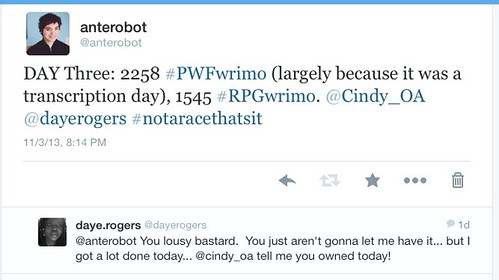
Reading comments in this post from last week, I’ve been thinking about my writing practices this week and the day-to-day stress of work and teaching and home life. I mean, it’s not like my workload is reduced during the month I’m choosing to put (digital) pen to (digital) paper. I think about those frustrating years of working a weekend job and teaching at the same time–trying to cram in grading student essays while working the graveyard shift at a newsstand on Sunset Blvd. Not fun. Cindy talks about GYST: Get Your Shit Together. I wonder if that’s an appropriate “pose” I can take on. It sure is something I wobble with on any given day. One of my early teaching mentors, Jeff Duncan-Andrade, talked about being a teacher and having to “hustle.” And I think about treating my writing and “real” responsibilities as hustle. In the past when I’ve played around with things like NaNoWriMo, I have approached it like this:

And this month I’m trying to approach it like this (while still keeping everything else somewhat together):
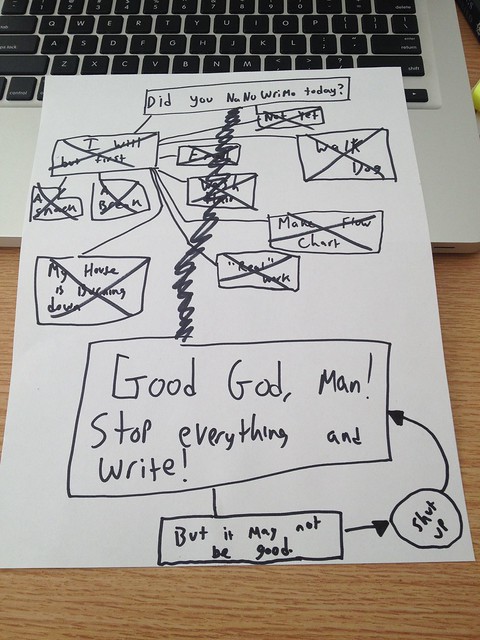
I’m only a quarter deep into what is a long month of writing, so we’ll see how long I can keep this pose going. I know there will be days I am not productive but I also know (and have felt) the awesome flow of cranking out 2,000 words on a beautiful Sunday morning. We’ll see where this pose takes me.
What new pose are you trying out?
[Also: it’s not too late to jump on the #NaNoWriMo bandwagon! If you get some awesome writing done, be sure to let my friend Daye know how much better you are doing.]


